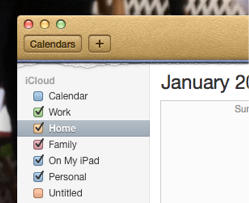MarsEdit 3.5.9: Significant Bug Fixes
April 5th, 2013MarsEdit 3.5.9 is now available. This is a free update for licensed MarsEdit customers. The update will be submitted to the Mac App Store today and will be available there when Apple approves the update.
This is quite a significant update, in spite of it being entirely composed of “bug fixes.” I’m still working a major update to MarsEdit that will accommodate the Mac App Store’s sandboxing requirements. Until that is ready, I’ll keep fixing bugs in the app but will not be able to add significant features.
MarsEdit 3.5.9 changes:
- Fix a bug from 3.5.8 that disabled draft support for Squarespace 5
- Fix a bug where uploaded images were not resized correctly on Retina Macs
- Fix a bug where the preview window could sometimes show the wrong blog’s theme
- Fix a bug that caused malfunctioning Screen Capture and Image import services in rich editor
- Fix a bug that caused unpredictable behavior with Paste contextual menu item
- Fix a bug that prevented URLs with apostrophes from being linked in rich text mode
- Fix a bug that could lock up the app if close box clicked on authentication panel
- Fix a bug that prevented favicons from being downloaded from some blogs
- Fix a bug where switching quickly to HTML Text mode after opening a post could clear the content
- Fix a bug where images would sometimes fail to load in main window preview
- Fix a bug where unchecking all categories for a post would not update categories correctly
- Fix a bug where ExpressionEngine authentication failures did not prompt the login panel to appear
- Fix a bug where the last change to an image’s name or size did not “stick”
- Fix a bug where some errors would display as simply “(null)” instead of with meaningful text
- Fix a crashing bug that could occur while editing the preview template
- Fix a bug that caused drawing defects in some preferences text fields
Enjoy!



